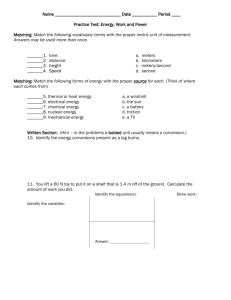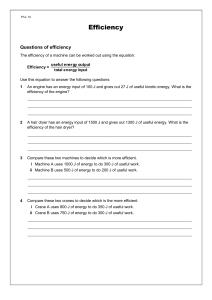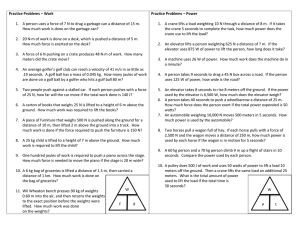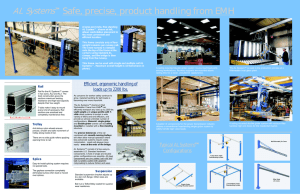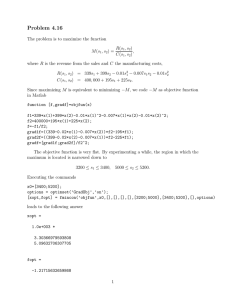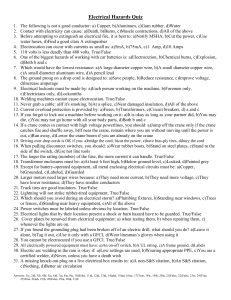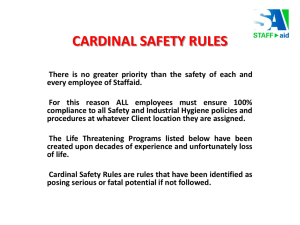Section 8_1
advertisement
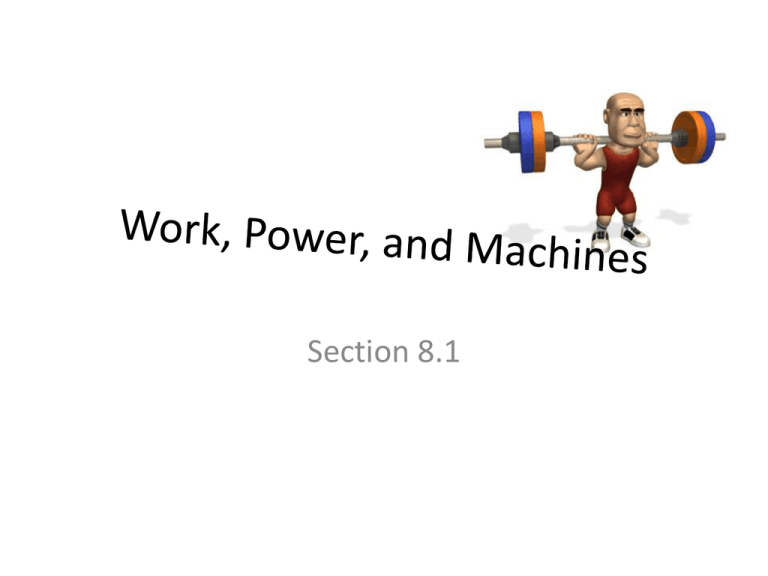
Section 8.1 Objectives • Define work and power • Calculate the work done on an object and the rate at which work is done • Use the concept of mechanical advantage and calculate it Is this considered work? Work • Definition: A quantity that measures the effects of a force acting over a distance • Equation: W = Force * distance • W=F*d • Measured in units of Joules (J) • No force = no work – Example: A ball rolling on a flat surface at constant velocity • No distance = no work – Example: A weightlifter holding a huge weight overhead, but not moving it. • Force and distance must also act parallel to each other, so is the ant actually doing any work? Example • A crane uses an average force of 5200 N to lift a girder 25 meters. How much work does the crane do on the girder? • W=F*d • W = (5200 N) * (25 m) • W = 130,000 J The definition of power? Power • Definition: A quantity that measures the rate at which work is done • Equation: Power = work / time • P=W/t • Measured in units of Watts (W) • In general: Doing the same amount of work but in less time requires more power. (running vs. walking upstairs to the 10th floor) Example: • A crane uses an average force of 5200 N to lift a girder 25 meters in a time of 150 seconds. Calculate the power output of the crane. • W=F*d • W = (5200 N) * (25 m) • W = 130,000 J • P=W/t • P = (130,000 J) / (150 s) • P = 870 W Mechanical Advantage • Definition: A quantity that measures how much a machine multiplies force or distance • Equation: • Mechanical advantage = output force / input force • Mechanical advantage = input distance / output distance A mathematical example: • • • • • • • W=F*d 2J=2N*1m 2J=1N*2m 2 J = 0.5 N * 4 m 2 J = 0.25 N * 8 m 2 J = 0.125 N * 16 m 2 J = 0.0625 N * 32 m Moral of the story: • If you’re not superman, you can use mechanical advantage to lift a car by applying small forces repeatedly over larger distances to do the same amount of work Example: • Determine the mechanical advantage of an automobile jack that lifts a 9900 N car with an input force of 150 N. • Mechanical advantage = output force / input force • Mechanical advantage = 9900 N / 150 N • Mechanical advantage = 66 Bonus: Rube-Goldberg • Rube Goldberg device • Watch for these things: – Count how many times gravity pulls an object downward. – Count how many times a given object is moving. – See if there are other ways in which energy is being stored and/or released.

